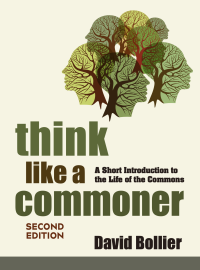Howard Schultz, the chairman of Starbuck’s, is wrestling with a conundrum caused his company’s own success: the erosion of social charm and conviviality that tends to accompany market enclosure. Inspired by the lovely social experience of Italian coffee bars, Schultz in 1987 decided to try to replicate that experience in the United States. It was a risky, entrepreneurial breakthrough. Now, with more than 13,000 Starbuck’s outlets around the planet, and aspirations to expand to 40,000, Schultz is honest enough to recognize that the corporatization of coffeehouses is degrading the experience.
In a February 14 internal corporate memo, “ The Commoditization of the Starbuck’s Experience,” Schultz laments how the company’s fierce expansion and efficiency measures “have lead to the watering-down of the Starbuck’s experience, and, what some might call the commoditization of our brand.”
For example, Starbuck’s introduced automatic espresso machines so they could serve more customers more rapidly, and so boost the ever-increasing quarterly dividends that Wall Street demands. Customers no longer get to watch baristas make coffee by hand, complains Schultz, which has “removed much of the romance and theater” of the Starbuck’s experience.
Now that store clerks are “no longer scooping fresh coffee from the bins and grinding it fresh in front of the customer” (because the coffee is packed in flavor-locked packaging), Starbuck’s stores are no longer awash in the smell of that tangy coffee aroma. This smell was “perhaps the most powerful nonverbal signal we had in our stores.” Schultz continues:
Then we moved to store design. Clearly we have had to streamline store design to gain efficiencies of scale and to make sure we had the ROI [return on investment] on sales to investment ratios that would satisfy the financial side of our business. However, one of the results has been stores that no longer have the soul of the past and reflect a chain of stores vs. the warm feeling of a neighborhood store. Some people even call our stores sterile, cookie cutter, no longer reflecting the passion our partners feel about our coffee. In fact, I am not sure people today even know we are roasting coffee. You certainly can’t get the message from being in our stores.
So here’s the quandary: Schultz wants his company to become the only brand that you think about when you think about coffee, and this means a relentless quest for standardization and efficiency. But Schultz cannot acknowledge that this aspiration also means weakening the very social charm and local distinctiveness that he loves.
Let’s face it: a brand is all about creating a monoculture. It is all about efficiencies, bureaucratization of process, and the marketing of a single cultural image. It is all about carefully crafting an experience and then monetizing it. The commodification of experience is the polar opposite of what a commons offers. In this case, the market is trying to replicate that which only the commons can truly generate.
Starbuck’s goes to such extremes in branding its “customer experience” that it used to prohibit customers from taking casual photos of each other inside of stores lest they be used to “steal” the trade dress interior design — a story that I detail in my book Brand Name Bullies). A local coffeehouse would consider that level of social control ridiculous, if not anti-social. For Starbuck’s, it was essential to “protecting the brand.”
I am grateful for a Starbuck’s when I encounter one in an airport, mall or out-of-the-way places that don’t usually have fairly good coffee. But let’s face it — Starbuck’s is also responsible for displacing varied, irregular, distinctively local coffeehouses with its famous global brand.
Mr. Schultz is either disingenuous or self-deceiving if he thinks that Starbuck’s can offer substantially the same experience as a locally owned coffee bar, whether it’s in Italy or Cambridge or Tulsa. I prefer Rao’s coffeehouse in Amherst over the nearby Starbuck’s precisely because it is more funky, authentic and local in feel. It does not feel like a carefully crafted stage for merchandising coolness. Starbuck’s is suffering from an authenticity deficit.
I see pathos in this situation because Howard Schultz is one of the most socially aware and decent executives out there. He was the reason that Starbucks has long provided health benefits to part-time employees, and offers stock options to baristas. While growing up in a New York housing project, Schultz learned how the lack of health care can affect a family; today he is an outspoken champion for universal health care for all Americans. (See Charlie Rose’s TV interview with Schultz here.)
Starbuck’s’ enclosure of coffee is almost poignant because Howard Schultz seems to recognize that the imperatives of corporate branding and finance are degrading his original vision. He wanted to create cozy and convivial “third places” in a culture that yearns for social connection. As the Chairman of a publicly traded corporation, however, Schultz is not likely going to be able to fulfill this vision because the global branding framework is working at cross-purposes.
Perhaps I’m wrong. Major tech companies have learned to embrace open source software, for example, showing that the proprietary and the commons can achieve a different kind of equilibrium. But that just may not be possible for a brand based on standardizing the local coffeehouse experience. It will be interesting to see how Howard Schultz moves this discussion forward…or not.











Recent comments